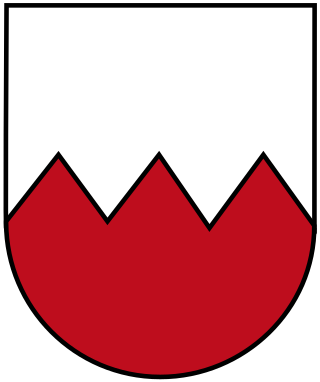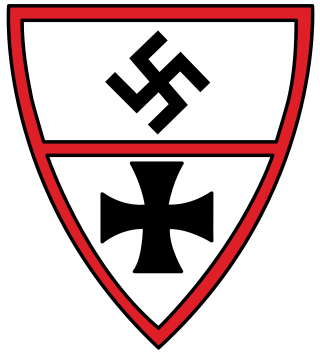| V Army Corps | |
|---|---|
| V. Armeekorps | |
 | |
| Active | October 1934 – 8 May 1945 |
| Country | |
| Branch | Army |
| Size | Corps |
| Engagements | World War II |
| Commanders | |
| Notable commanders | Richard Ruoff |
V Army Corps (V. Armeekorps) was a corps in the German Army during World War II.
| V Army Corps | |
|---|---|
| V. Armeekorps | |
 | |
| Active | October 1934 – 8 May 1945 |
| Country | |
| Branch | Army |
| Size | Corps |
| Engagements | World War II |
| Commanders | |
| Notable commanders | Richard Ruoff |
V Army Corps (V. Armeekorps) was a corps in the German Army during World War II.
The V corps was formed a Corps level formation of the 17th Army assigned to Army Group South. By 1943, the deteriorating situation on the Eastern Front forced the evacuation of the V corps along with the rest of 17th army to the Crimea. However, Red Army advances in the Dnieper Campaign forced more and more divisions to be diverted to the newly reconstituted 6th Army in an ultimately unsuccessful attempt to stem the onslaught. By October 1943, the whole of 17th army order of battle consisted of just two German and four Romanian divisions, all of which were under strength. During the course of the Crimean Offensive, the Red Army captured the Peninsula and marched the remnants of 17th army, including most of the V Corps, into captivity. [1]
In January 1945 a new V Army Corps was set up in Military District XIII, for which remnants of the staff of the 221st Security Division and the 20th Luftwaffe Storm Division were used, and deployed in the area of the 4th Panzer Army. On April 19, the V Corps with the 35th and 36th SS Grenadier Divisions and the 275th and 342nd Infantry Divisions, were subordinated to the 9th Army, which was surrounded by the Red Army.
When on April 28, General Busse ordered the 9th Army to break out of the Halbe pocket, the V Army Corps organized the protection of the southern flank. The Corps suffered heavy casualties and the survivors went into western captivity by crossing the destroyed Elbe bridge at Tangermünde.
"V. Armeekorps". Lexikon der Wehrmacht. Retrieved 21 January 2011.

The German 73rd Infantry Division or in German 73. Infanterie-Division was a German military unit which served during World War II. The division consisted of more than 10,000 soldiers, primarily of the infantry branch, with supporting artillery. The division was only semi-motorized and relied on marching for the infantry units and horse-drawn transport for most of the support equipment, especially the artillery.

The German 20th Infantry Division was an infantry division of Nazi Germany.

The 26th Infantry Division was a pre-World War II German Infantry Division of the 1st mobilisation wave. It was mobilised for World War II on September 26, 1939, disbanded on September 10, 1944, near Radom and reformed as the 26th Volksgrenadier Division on September 17, 1944, near Poznań by absorption of the new 582nd Volksgrenadier Division of the 32nd mobilisation wave. Remnants of the Division entered U.S. captivity in the Harz region in 1945.
The LXIV Corps was a corps-level command of the German Army on the Western Front during World War II.

The 30th Infantry Division of the Wehrmacht was created on 1 October 1936 in Lübeck and mobilized on 26 August 1939 for the upcoming invasion of Poland. At that time, it consisted of the usual German infantry division elements: three infantry regiments of three battalions each, one three-battalion regiment of light artillery, one battalion of heavy artillery, a panzerjager (anti-tank) battalion, an aufklärungs (reconnaissance) battalion, a signals battalion, a pioneer (engineer) battalion, and divisional supply, medical, and administrative units.

The 15th Infantry Division was an infantry division of the German Army during the interwar period and World War II, active from 1934 to 1945.
II Army Corps was a corps in the German Army during World War II.

German XI. Corps was a corps in the German Army during World War II.

VIII Army Corps was a corps in the German Army during World War II. It was destroyed during the Battle of Stalingrad and reformed in mid-1943.
IX Army Corps was a corps in the German Army during World War II. It was formed on 1 October 1934 under the command of General Friedrich Dollman in Kassel with the camouflage name of Kassel and redesignated IX Corps after the creation of the Wehrkreis IX recruitment and training area.
The 290th Infantry Division was a German infantry division in World War II. It was formed in the Munster Training Area in Wehrkreis X on 6 February 1940 and surrendered to Soviet forces at the end of the war as part of Army Group Courland.
X Army Corps was a corps in the German Army during World War II. It was formed in mid-May 1935 from the Cavalry Division.
XII Army Corps was a corps in the German Army during World War II. It was formed in the Wehrkreis XII recruitment and training district in Wiesbaden in October 1936 and was mobilized before the outbreak of war at the end of August 1939.
XIII Army Corps was a corps of the German Army during World War II. Made up of several divisions, which varied from time to time, it was formed in Nuremberg on 1 October 1937.

The XXIV Army Corps was a unit of the German Army during World War II. The unit was re-designated several times; originally being Generalkommando der Grenztruppen Saarpfalz, later Generalkommando XXIV. Armeekorps, then XXIV. Armeekorps (mot.) and finally XXIV. Panzerkorps.

XXXXII Army Corps was a corps in the German Army during World War II.
German XXX. Corps was a corps in the German Army during World War II.
The LIII Army Corps was a corps of the German Army during World War II. It was first deployed in 1941 and was active as part of various armies under Army Group Centre until 1944, when it was destroyed during the Soviet Red Army operations Bagration and Kutuzov in June and July 1944. The corps suffered enormous casualties as a result of the Soviet attacks. All of its divisions were destroyed and all but a few of the soldiers were killed or captured by the Soviet Union. A new formation named LIII Army Corps was subsequently deployed in December 1944, when it was assigned to Seventh Army and fought on the western front until surrendering to United States Army forces in April 1945.

The XXVI Army Corps was a Wehrmacht army corps during World War II. It existed from 1939 to 1945. It was also known as Corps Wodrig during the Invasion of Poland.
The LXXXIII Army Corps was an army corps of the German Wehrmacht during World War II. It was formed in 1942 and existed until 1943. After its dissolution, the personnel of the LXXXIII Army Corps was used to form the staff of the new 19th Army.